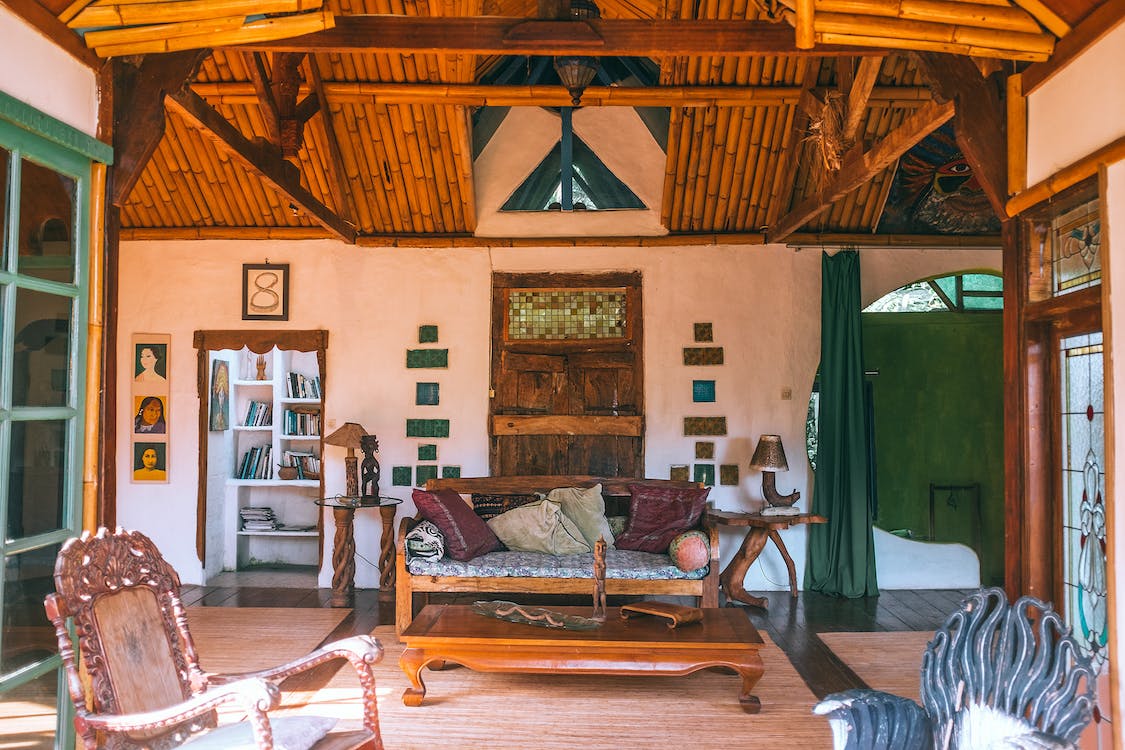|
|
Sustainable wood is a crucial choice for eco-conscious individuals who want to contribute to a greener future. By understanding the different types of sustainable wood and the importance of certifications, consumers can make informed decisions when purchasing wood for furniture, flooring, or other projects.
What is sustainable wood?
Sustainable wood refers to wood that is sourced and harvested in an environmentally responsible and socially conscious manner. It involves practices that promote the long-term health and viability of forests and the communities that depend on them. Sustainable wood sourcing ensures that trees are harvested in a way that allows new ones to grow and maintain the overall health of the forest ecosystem.
Using natural resources sustainably, like forests, is a big part of the 2030 Sustainable Development Goals. The Paris Agreement from 2015 also shows how forests help with climate change. Better ways to track wood products’ life cycle are available now, which helps with moving towards low-carbon economies. Sustainable forest management also helps people’s lives, landscapes, and cities while reducing carbon and material footprints worldwide.
The importance of choosing sustainable wood
Choosing sustainable wood is important for several reasons. First and foremost, it helps to protect and conserve our forests, which are essential for maintaining our planet’s biodiversity. Sustainable wood sourcing also helps to combat deforestation, a major contributor to climate change.
Additionally, consumers can support responsible forestry practices and the communities that rely on them by choosing sustainable wood. It ensures that the people involved in the production and harvesting of wood are treated fairly and that their livelihoods are sustained.
Certifications for sustainable wood
One way to identify sustainable wood is through certifications such as Forest Stewardship Council (FSC) certification. FSC certification guarantees that the wood used in a product comes from responsibly managed forests that meet social, economic, and environmental standards.
When purchasing wood, look for the FSC logo or inquire about the certification to ensure that you are supporting sustainable practices.
Types of Sustainable wood
1. Bamboo as a sustainable wood alternative
Bamboo is a popular sustainable wood alternative due to its rapid growth and high renewability. It is not a tree but a grass that can be harvested every 3-5 years, making it a highly sustainable and eco-friendly choice.
Bamboo is resource-efficient and impressively strong and durable, making it versatile for various uses like furniture and flooring. Its inherent strength and sustainability have elevated bamboo into a league of its own, expanding the potential for eco-friendly and resilient design.
2. Reclaimed wood
Reclaimed wood is another sustainable option for furniture and other projects. It refers to wood salvaged from old buildings, barns, or other structures and repurposed for new use.
Opting for reclaimed wood serves a dual purpose: it curbs the need for fresh timber, conserving natural resources while preventing the squandering of valuable materials. Moreover, incorporating reclaimed wood imparts a distinctive and rustic allure to furniture creations, further enhancing their character and uniqueness.
3. Sustainable wood species for furniture projects
Several sustainable wood species are ideal for furniture projects like oak, black cherry, maple, and teak are all hardwoods that can be sourced sustainably. These wood types have a beautiful grain pattern and are known for their durability and longevity.
By selecting these sustainable wood options, we can create furniture that is not only functional and aesthetically pleasing but also environmentally friendly and contributes to a more sustainable future.
4. Sustainable wood for flooring and cabinets
When crafting exquisite flooring and cabinetry, the choice of wood species takes center stage, influencing both the visual appeal and lasting power. Thanks to their unique characteristics, some wood varieties are tailor-made for these purposes.
The likes of oak, maple, and teak, celebrated as robust hardwoods, steal the spotlight for their remarkable resilience and ability to shrug off daily wear and tear. Beyond their natural beauty, these woods possess the vigor to thrive in bustling spaces.
Whether gracing homes or bustling commercial areas, these wood species effortlessly blend functionality and elegance, weaving together environments that endure and champion sustainability.
Factors to consider when buying sustainable wood
There are several factors to consider when buying sustainable wood. First, consider the source of the wood. Ensure that it comes from a sustainably managed forest or is a reclaimed material. Additionally, consider the specific wood species and its environmental impact. Some species are more abundant and easier to replant than others.
It is also important to consider the durability and longevity of the wood. Choosing a wood that can withstand the test of time reduces the need for frequent replacements, thus reducing overall waste.
Benefits of using sustainable wood
Environmentally friendly practices
Using sustainable wood promotes environmentally friendly practices. It helps to protect forests, reduce deforestation, and combat climate change. By choosing sustainable wood, individuals can actively contribute to preserving the natural environment.
Durability and longevity of sustainable wood
Sustainable wood, especially hardwoods, is known for its durability and longevity. This means that furniture made from sustainable wood can withstand the test of time and require fewer replacements. Using durable materials reduces waste and contributes to a more sustainable lifestyle.
The positive impact on wildlife and forests
By choosing sustainable wood, individuals are indirectly supporting wildlife and the overall health of forests. Sustainable forestry practices help protect habitats and maintain biodiversity. Forests provide essential ecosystems for numerous plant and animal species, and sustainable wood sourcing ensures their continued existence.
Frequently Asked Questions
Bamboo and reclaimed wood are the best eco-friendly wood types for sustainable furniture. These woods are sourced from sustainable sources and have less impact on the environment.
Bamboo is considered an eco-friendly wood type because it is a fast-growing and renewable resource. It grows much faster compared to other wood species, making it an ideal choice for sustainable furniture.
Reclaimed wood is wood that has been previously used for something else, such as old barns, buildings, or furniture. It is salvaged and repurposed, giving new life to the wood and reducing the need for raw materials.
Sustainability is important in furniture because it helps conserve resources, reduce waste, and minimize the negative impact on the environment. By choosing eco-friendly wood types, we can support sustainable practices in the furniture industry.
Yes, bamboo is a popular choice for wood flooring. It is a durable and versatile material that can be used for various applications, including flooring.
Other sustainable wood types include pine, white ash, and certain species of wood grown in North America. It is important to consider the source and ensure that the wood is sourced from sustainable forests.
Buying wood from Asia or Africa may not always be sustainable. It is important to check if the wood is sourced from sustainable and responsibly managed forests to ensure that it has a minimal impact on the environment.
To ensure you are buying sustainable wood, look for certifications such as the Programme for the Endorsement of Forest Certification (PEFC) or the Forest Stewardship Council (FSC). These certifications guarantee that the wood comes from responsible and sustainable sources.
Yes, sustainable wood can be used for various purposes, including furniture, doors, flooring, and wood projects. By using sustainable wood, you can reduce your environmental footprint and support eco-friendly practices.
Using eco-friendly wood types helps reduce emissions by decreasing the demand for unsustainably harvested wood. Sustainable wood is often sourced locally, reducing the transportation emissions associated with long-distance wood deliveries.
Conclusion
Sustainable wood is the way forward for the furniture and construction industry. By opting for responsibly sourced and harvested wood, consumers can support environmentally friendly practices and protect our forests for future generations.
Choosing certified sustainable wood and considering factors such as durability and longevity when making purchasing decisions can positively impact the environment and promote a greener future.












